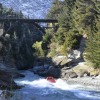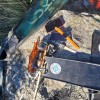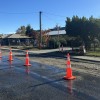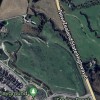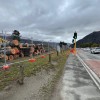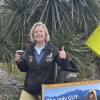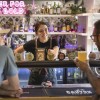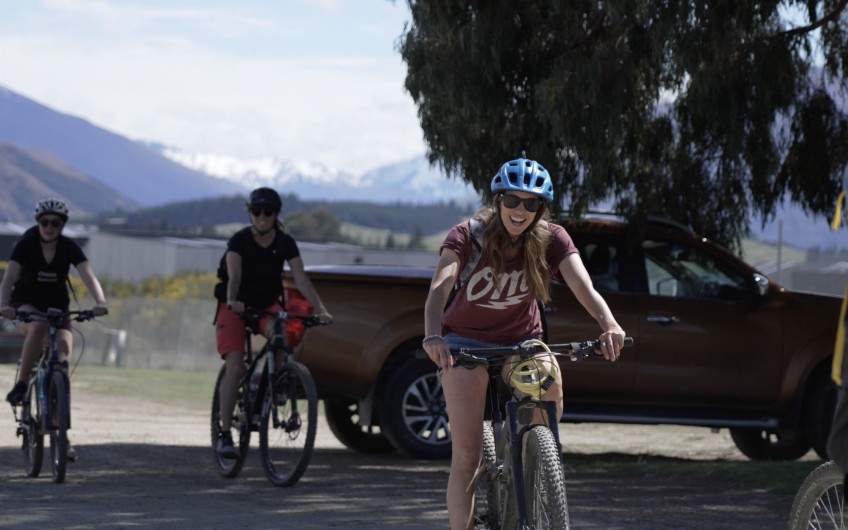
Wao: We’ve just got to get out of the car
The fifth annual Wao summit is fast approaching. Much like our climate crisis. We've teamed up with Wao this year to dig deeper into what really needs to change, peeling back the reality of climate action. This week Georgia Merton from Wao dives into transport, one of the summit's key themes this year.
To meet our emissions targets, we have to halve the amount of time we spend in our cars. For a little perspective, driving 500 metres in the car equates to roughly one kilogram of glacial ice melt. So how do we make them less seductive?
Cast your mind back to 2019. Aside from Donald Trump’s impeachment and our blissful ignorance of an impending pandemic, it was a time when many of us would emerge from the supermarket with gleaming plastic bags, full to bursting. At home, they’d go in the bin, or be stuffed into the plastic bag drawer to be used once, maybe twice more. Seems mad now, but it was perfectly normal then.
For the shift to totes and paper, we can thank both legislation and consumer pressure. Popular attitudes were exiling the plastic bag before any ban was put in place. As a collective, we decided that plastic bags were a stupid idea. In fact, they were very uncool. Plastic was out, re-useables were in.
It seems small (and as far as climate action goes, it is), but it was an example of fairly quick collective behaviour change. And, with radical action needed to bring down our transport emissions, a similar approach may well be needed to get us swapping the car for the bike, bus or footpath.
Though the Southern Lakes has the highest number of EVs per capita than anywhere else in Aotearoa, this isn’t going to cut it. As Jack Santa Barbara explains well here, it needs to be ‘EVs if necessary, but not necessarily EVs’. Switching our petrol fleet for an all-electric one would still have us way over our targets. So while there are, of course, exceptions to ensure equitable access for all, including those with disabilities, the elderly and young children, we’ve just got to get out of the car.
Rather than behaviour change, Dr Niki Harré, professor of psychology at Auckland University, calls this kind of shift cultural transformation. “People want to do what those around them are doing,” says Harré, who specialises in the psychology of sustainability. “We tend to do things out of sheer mimicry, or because it feels socially appropriate, or it feels like a part of our identity.”
Basically, it’s time to make the bike and the bus cool, and, for the most part, leave the car behind with plastic bags. We’re not forging a new path here, either, by any means. The Dutch (of course) have managed to make Utrecht a bicycle-first city, redesigning roads and creating large bike-parking buildings. Nationally, bikes outnumber people.
Similar transformations are happening across the world. Copenhagen, a top dog when it comes to sustainable transport, is aiming for 75 percent of journeys to be made on foot, by bike or by public transport. They’re installing smart traffic light systems which reduce cyclists’ wait times - especially when it’s raining. California has banned gas-powered vehicle sales by 2035.
Cities around the world are designing a future where the use of public, shared or active transport is the obvious choice, for the climate as well as for our physical, mental, economic and social well-being.
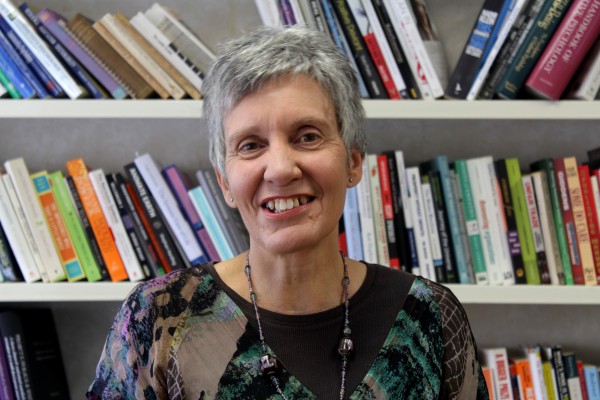
'People want to do what those around them are doing': Dr Niki Harré, a professor of psychology at Auckland University, on the psychology of changing behaviour.
If they can do it, so can we. And it starts, as Dr Harré says, with talking about it.
So how do we get around in the Upper Clutha?
Wao initiative, Get SMART, Get Moving ran a local transport survey to find out how our community was moving around. The Get SMART survey had 367 local participants. The results, analysed and reported by Sierra Alef-Defoe, were interesting, though perhaps not all that surprising.
Most importantly, no matter the distance people travelled, the private petrol car came out on top. And, the biggest barrier stopping people from using more sustainable transport options was the comfort and convenience of said car. Let’s look at some of the finer details.
- How we get around town.
This was where we found, as Alef-Defoe puts it, some low hanging fruit. The majority of trips people made were short ones (one to ten kilometres), and even for the down-the-road, one ‘k trips, the car was overwhelmingly the steed of choice. Meanwhile, we found that 70 percent of people have access to a bicycle. With minimal amounts of traffic in our small communities, active transport seems like a no-brainer. So, we asked people what was stopping them.
Amongst those who wrote their survey responses in, better active transport infrastructure was the biggest factor that people said would shift the way they move. That is, a connected network of cycleways (protected and separated from cars), end of ride facilities (more secure parking for e-bikes and places to get changed), and more pedestrian-only zones. People want access to more affordable e-bikes, too. France has just started paying drivers €4000 to make the switch from petrol guzzler to e-bike, so maybe it’s time we took a leaf out of their book.
Another barrier to active transport was the need to haul dependents and cargo around. A quick reference to the Danish (who somehow manage to get their kids to school and do the groceries and carry their tools around) showed a rising popularity in cargo bikes. That is, bikes with big trailers. These are still pretty expensive in Aotearoa, but as supply increases, this should only improve.
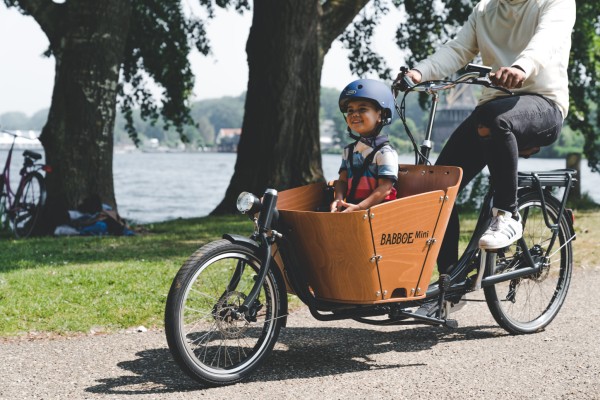
Carting kids and groceries are cited as reasons for car reliance, but nifty trailer and cargo bike options are increasingly available in New Zealand (Image Facebook/Cargocycles).
As with any change, there are hurdles - and there are also solutions. Rome wasn’t built in a day, and nor was Copenhagen’s cycle infrastructure. And aside from being a vital intervention emissions-wise, there are a bunch of other reasons to get on board with active transport. We all know the benefits of exercise for physical and mental well-being. In fact, in the Get SMART survey, the top reason people gave for wanting to shake up their transport habits was fitness. In third place (after carbon footprint) was well-being.
With petrol prices at an all time high, walking, biking or ridesharing is a smart financial move, too. Phasing cars out of cities has also been shown to be good for local business. The Copenhagenize Design Co estimates that society earns €0.64 for every kilometre cycled, versus a loss of €0.71 for every kilometre driven. Meanwhile Utrecht (the Dutch city from earlier which was redesigned for bikes) is estimated to be saving about $300 million a year from reduced air pollution and healthcare costs.
And, if we want to get philosophical about it, walking or riding is kind of an act of rebellion in a fast-moving world. Yes, the car is faster. But is faster actually better? Aren’t we moving away from that model? Isn’t everyone exhausted from rushing around, anyway?
Berit Landgraf, member of the Wao Get SMART crew and organiser of up-and-coming Southern Lakes bike festival, Biketober, points out that bikes are already pretty popular in this area. “A lot of people in the community have a bike in their garage,” Berit says, “So it’s about using it recreationally, but also getting people past that so they think about using it for transport as well.”
Zooming out from active transport, we had a good look at what people said were their main barriers to sustainable transport overall. According to Alef-Defoe, the first was the comfort and convenience of the car. That is, the car is easier than anything else that is currently on offer. Second was the lack of availability of decent public transport, and third was living too far away to bike or walk. And, more frequent and reliable public transport was the number one factor that people said would shift their behaviour.
So, public transport it is, then. It’s got to become easier to get the bus than jump in the car. And things are already starting to happen - on September 27th, Wānaka’s first Community Shuttle Trial begins. The shuttle will run for three months, operating three days a week between Wānaka and Hawea. There will be 13 stops along the way - find out more information and get involved here.
Though the individual effort can feel miniscule here, this is where community efforts, local politics and the power of the vote comes in. Vote for councillors who are speaking to this stuff, and keep the wheels turning on better public and active transport infrastructure.
Another easy win, as Alef-Defoe points out, is carpooling - especially considering how many empty seats are going over the Crown Range every day. "It's a huge missed opportunity," Alef-Defoe says, "There should be an app." Sure enough, apps for short and long distance trips are getting this cranking around the world. Here on home soil, platforms like Coseats and Link are just taking flight.
- How we get out of town.
There were no real surprises here - almost everyone uses their cars to or jumps on a plane for longer distances. Over 60 percent of people were going distances of 20 to 80 kilometres more than once a week, too. As a rural place with our main hubs spread out (that is, Wānaka, Hawea, Cromwell and Queenstown), we have plenty of people frequenting the same routes.
The solution? More public transport - between communities, between regions and up and down the ski fields. This was the resounding message from our survey participants. As one respondent wrote ‘An affordable shuttle service at good times between Wānaka and Hawea and I would cut 90 percent of my car trips’. Community Shuttle Trial, here we come.

‘An affordable shuttle service at good times between Wānaka and Hawea and I would cut 90 percent of my car trips’: survey respondent (Image supplied).
Time for a collective reimagining, then.
We’ve got plenty to improve on, but the options are within reach. Decent public transport. Active transport infrastructure. Intentional urban design - our communities are, after all, still small, and we have the chance to shape this in a big way.
We know that these things work, too, both from international and local examples. In Hastings and New Plymouth, cycleways and walking paths have boosted rates of active transport, particularly amongst those on low incomes. As the saying goes, build it and they will come.
And of course, there’s the attitude change. The rebranding of public and active transport into something normal, something sexy, something Instagrammable - something brands want to plaster their names on. Something, as Dr Harré puts it, you want to be a part of because everybody else is. And how do we do that? Conversations.
“It’s about making it uppermost in people’s minds,” Dr Harré says, “And each individual can do this.” The many events of this year’s Biketober festival and Wao Summit are a great place to start with these collective conversations. But let’s not let it end there. Organise carpooling amongst your friends. Make your bike look so good people can’t help but watch you pass. Take every opportunity to gloat about how much time you had (or will have) to read on the bus. Wear your bike helmet everywhere.
We are planning to run the survey again in two years time. By then, let’s be up there with the Dutch and the Danish, leaving cars in the dust on our way to a better future.
Keen to hear more? Be in to win an ALL ACCESS PASS to the Wao Summit. Find out more here.















